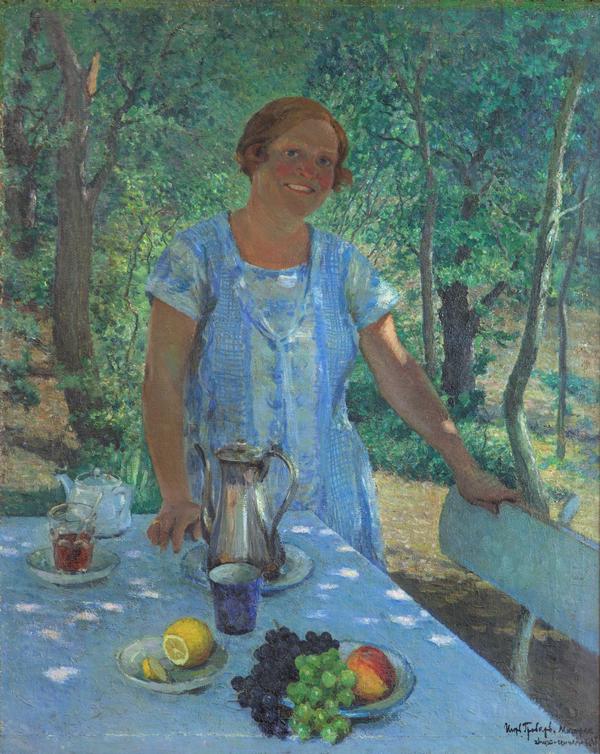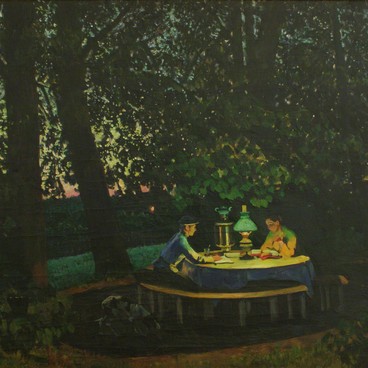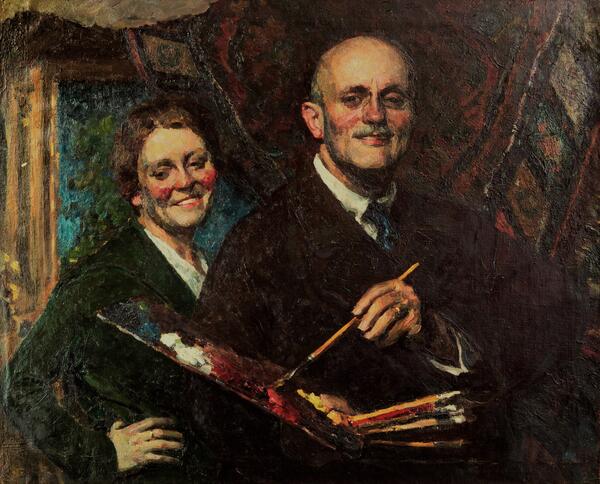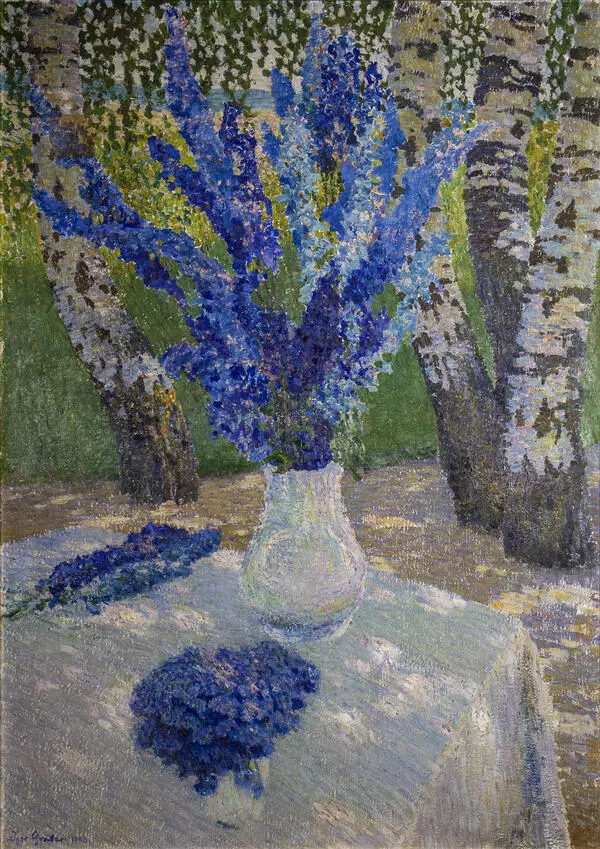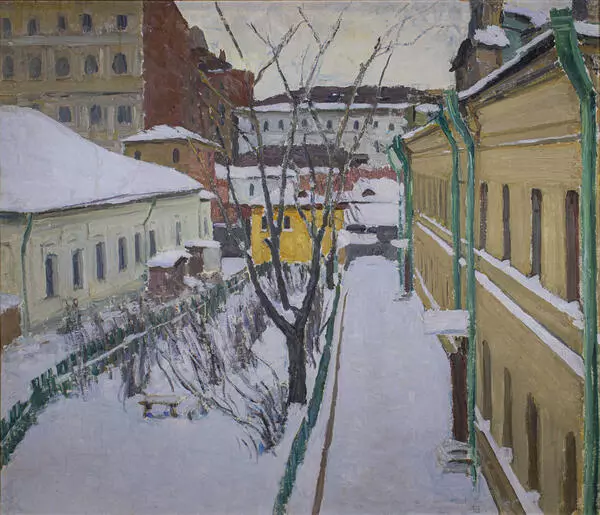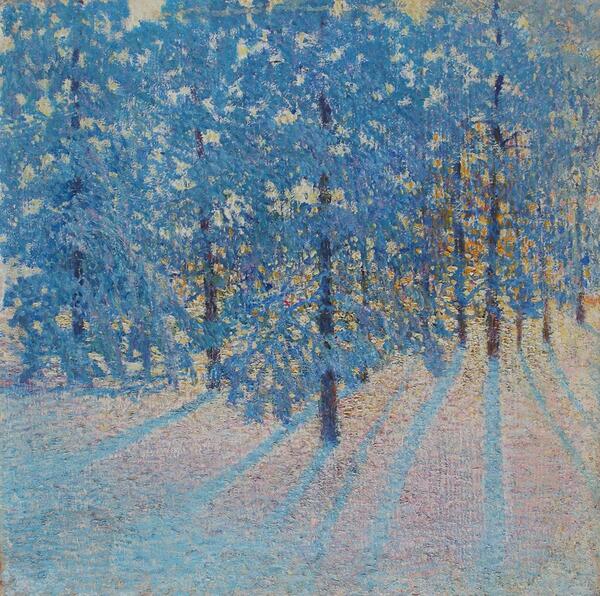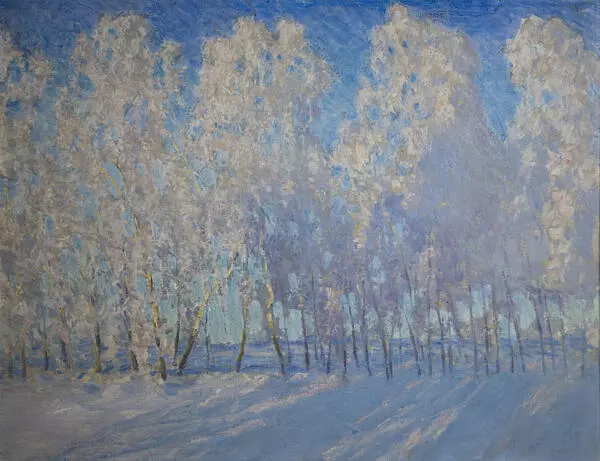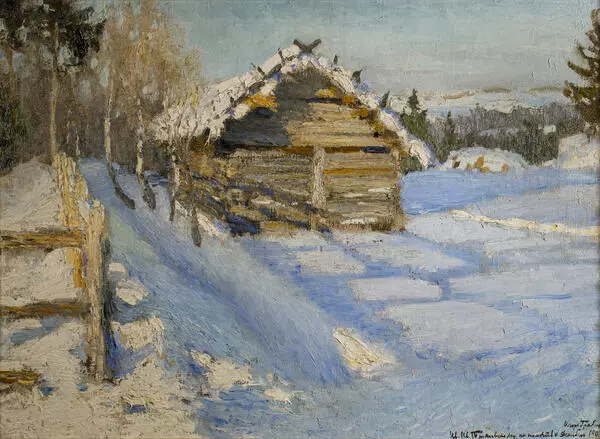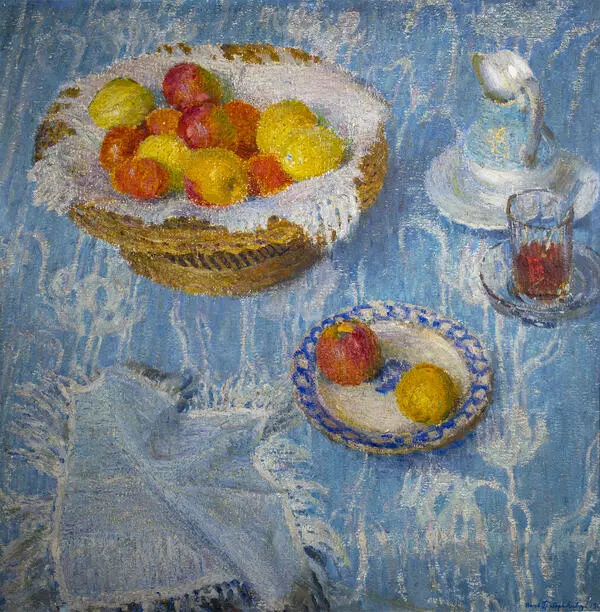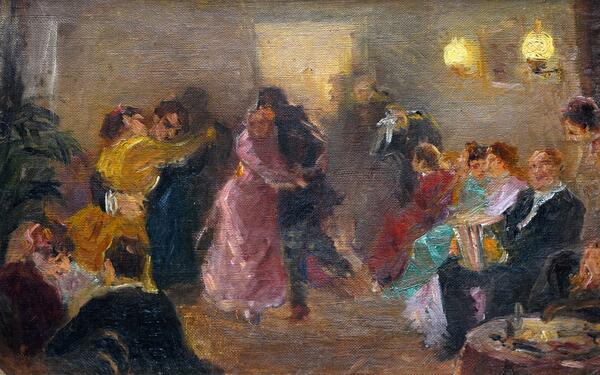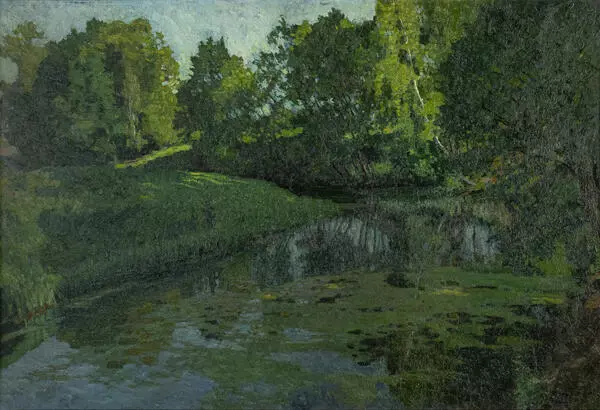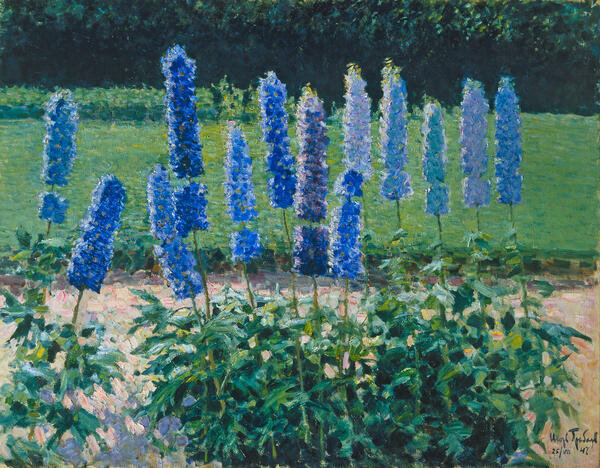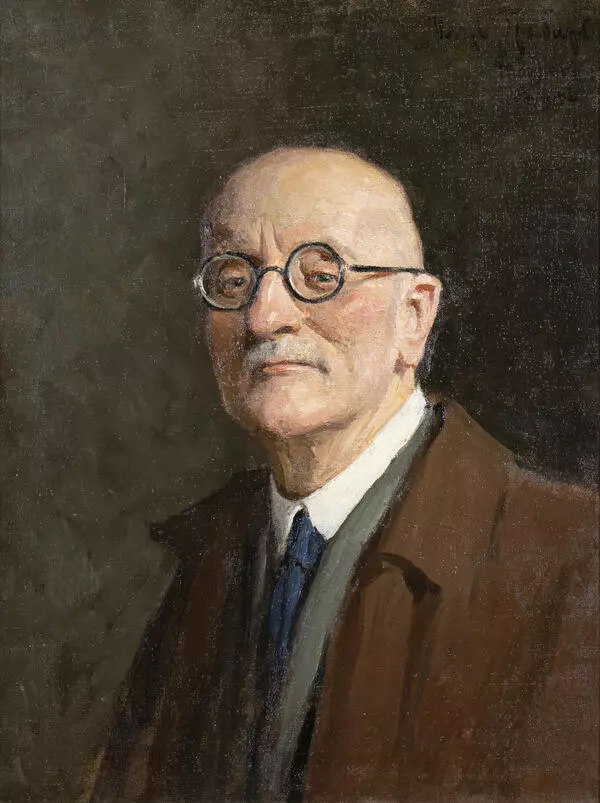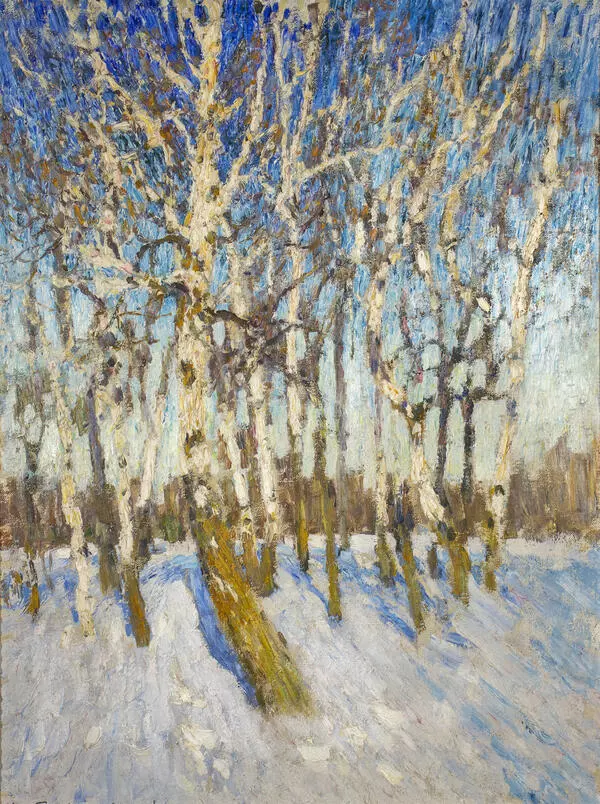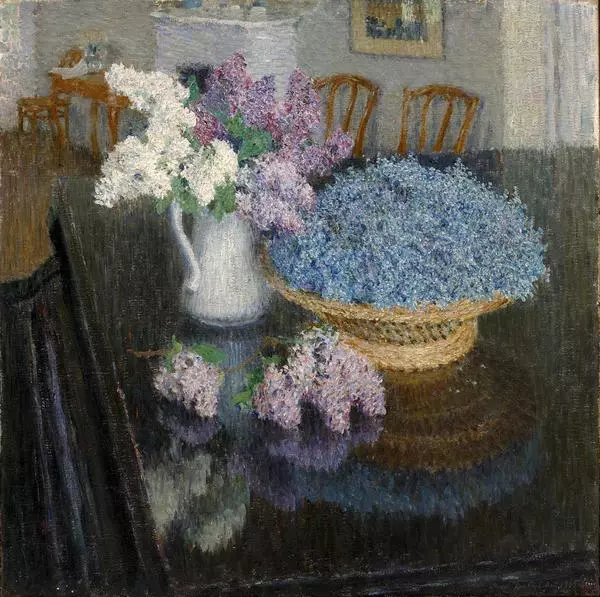Igor Emmanuilovich Grabar was a Russian painter and restorer, an apprentice of Ilya Efimovich Repin (1844-1930), born in 1871 in Budapest. Shortly after his birth the artist’s mother and her children moved to the ancestral estate located in the Carpathian Russia.
Igor Emmanuilovich Grabar received a law degree in St. Petersburg, but unlike his brother, who became a famous lawyer, he decided to devote his life to painting. During his studies he went to drawing lessons at the Moscow Society of Art Lovers, then he learned from Russian artist and teacher Pavel Petrovich Chistyakov (1832-1919), continued his education at the Imperial Academy of Arts under the direction of Ilya Efimovich Repin.
After graduation Igor Grabar went to Europe, where he perfected his skills in a private studio school. After returning from the trip, he joined associations World of Art and Union of Russian Artists and presented his paintings at Russian and foreign exhibitions.
In 1913 Igor Grabar headed Russia’s largest gallery - the Tretyakov Gallery, while at the time continuing to take an active part in the artistic life of Moscow and St. Petersburg. In 1918 he initiated establishment of the Central Workshops for the Restoration of Works of Art, which he subsequently directed for 12 years.
Igor Emmanuilovich Grabar received a law degree in St. Petersburg, but unlike his brother, who became a famous lawyer, he decided to devote his life to painting. During his studies he went to drawing lessons at the Moscow Society of Art Lovers, then he learned from Russian artist and teacher Pavel Petrovich Chistyakov (1832-1919), continued his education at the Imperial Academy of Arts under the direction of Ilya Efimovich Repin.
After graduation Igor Grabar went to Europe, where he perfected his skills in a private studio school. After returning from the trip, he joined associations World of Art and Union of Russian Artists and presented his paintings at Russian and foreign exhibitions.
In 1913 Igor Grabar headed Russia’s largest gallery - the Tretyakov Gallery, while at the time continuing to take an active part in the artistic life of Moscow and St. Petersburg. In 1918 he initiated establishment of the Central Workshops for the Restoration of Works of Art, which he subsequently directed for 12 years.

